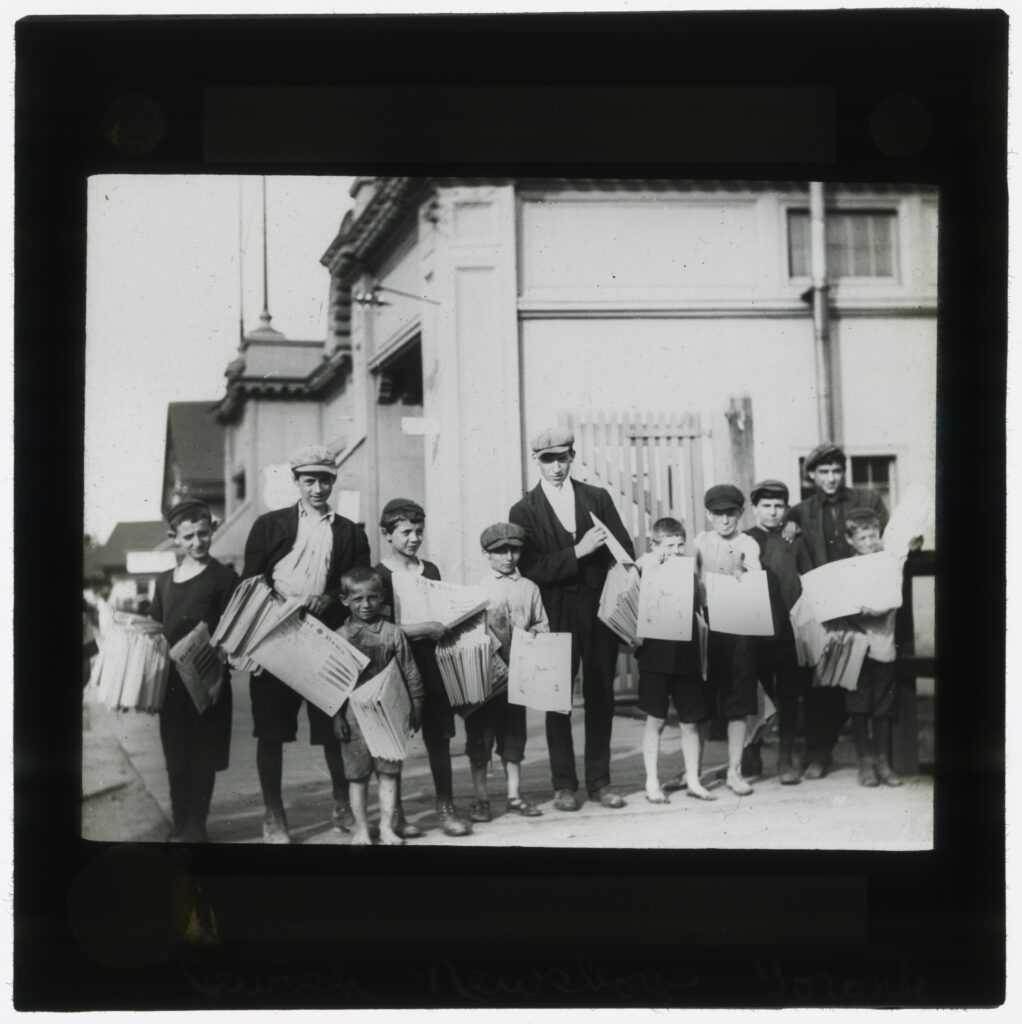
The Ward, formally known as St. John’s Ward, was a neighbourhood in downtown Toronto bounded by Queen Street to the south, Yonge Street to the east, College Street to the north, and University Avenue to the west.
The Ward was considered one of the poorest and unhealthiest areas in the city. In 1911, Toronto’s medical health officer Dr. Charles Hastings, accompanied by city photographer Arthur Goss, embarked on an investigation into six slum districts in Toronto. The Central or City Hall District that encompassed the Ward was the most densely populated. Here, he visited 1,653 homes housing 11,645 people. Of these homes, 108 were deemed unfit for habitation. In fact, Hastings report found that:
…conditions peculiar to great cities are found to be present to a lamentable extent: rear houses, dark rooms, tenement houses, houses unfit for habitation, inadequate water supply, unpaved and filthy yards and lanes, sanitary conveniences so-called which because of their position or condition, or for various other reasons, have become a public nuisance, a menace to public health, a danger to public morals, and, in fact, an offence against public decency.
By the early 1900s, the majority of the inhabitants of the Ward were eastern European Jewish immigrants fleeing persecution in their home countries. Of the 1,653 homes visited, Hastings noted the following nationalities:
1,207 Hebrew families; 180 Italian; 32 Polish; 25 German; 9 Chinese; 8 [African Canadian]; 7 French; 3 Armenian; 2 Macedonian; 1 Swedish; 1 Greek; 1 Assyrian.
In addition, Hastings counted 13 common lodging houses, occupied by single men living in overcrowded and unsanitary conditions, sometimes up to six to a room.
Despite these conditions, for new Jewish immigrants the Ward provided affordable housing and proximity to downtown workplaces. Additionally, the Jewish amenities the early immigrants created encouraged later Jewish immigrants to settle in the Ward. By 1911, the Ward was a self-contained community of Jewish services and facilities, supporting education, religious, social and business institutions.
However, due to the influx to the area, the demand for housing increased, resulting in rising rents, high levels of congestion, and deteriorating living conditions. The Ward remained the centre of Toronto’s Jewish community until the early 1920s, by which time many Jewish residents had moved west to the Kensington Market area. At the same time, the Ward was slowly being demolished to make way for civic and business developments, such as hospitals, government buildings, office towers, and hotels.
For many decades, the area was almost entirely commercial and institutional. A return of residents has been seen in recent years with condominium towers being erected in the area. With it, has come an increase in interest by city historians and the general public in the significance of the Ward, one of the city’s first immigrant settlement areas, a stone-throw’s distance from old City Hall.
This collection at the OJA consists of 15 monochrome glass lantern slides depicting Jewish life in the Ward in the early twentieth century. The original creator is not documented in our records, nor is the route they took to arrive at our archives. However, our research indicates that the photographs were likely taken by William James, an English-born professional photographer with a penchant for human interest photography, whose extensive collection is housed at the City of Toronto Archives. During his career, James lived and worked in close proximity to the Jewish community, first on Leonard Street, then Major Street, then Manning Avenue. He would also often walk from Toronto to Hamilton, taking photographs along the way, which explains the one outlier in the collection – a photograph of the Hamilton Market.
Our collection, numbering only 15 in total, are some of our earliest and most evocative images of the Toronto Jewish community in St. John’s Ward. In so few photographs, James managed to document the streetscape, living conditions, and religious practices of the community, as well as Jewish businesses and employment, including a striking image of Sam Lichtman and his Jewish newsboys. James’ handwritten captions on each slide provide us with evidence that his documentation of the Jewish community was intentional and familiar.

Ontario Jewish Archives
Blankenstein Family Heritage Centre
UJA Federation of Greater Toronto
Sherman Campus
4600 Bathurst Street
Toronto, Ontario M2R 3V2
416-635-5391
www.ontariojewisharchives.org